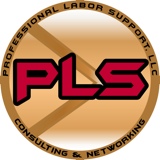Information
-
Document No.
-
Project Name
-
Location
-
Client
-
Conducted on
-
Prepared by
-
Purpose of audit:
1. OSHA BIG 4 - Fall Hazards
-
1.1. Fall risks of 6 feet or more? (including voids, pits, and trenches)
-
1.2. Fall Protection used were needed?
-
1.3. Guard rails in place where needed?
-
1.4. Floor Openings covered?
-
1.5. Working in high winds or wet conditions?
-
1.6. Ladders tied off, secured and properly positioned?
-
1.7. Ladders are in good condition?
-
1.8. Ladder unsuitable for job? (e.g. metal ladder used for electrical work)
2. OSHA BIG 4 - Struck by hazards
-
2.1. Falling or flying objects
-
2.2. Heavy equipment and/or vehicles on-site (forklifts)
-
2.3. Concrete or masonry walls properly braced (consider high winds)
3. OSHA BIG 4 - Caught in or between hazards
-
3.1. Swing radius barricades in place
-
3.2. Safe distance from heavy equipment
-
3.3 Excavation protection
-
3.4. Conveyors
-
3.5. Machinery guarding
4. OSHA BIG 4 - Electrical Hazards
-
4.1. Proper electrical tool used?
-
4.2. Lack of GFCI protection?
-
4.3. Electric cords in good condition?
-
4.4. Contact with overhead electrical lines (10 ft)?
-
4.5. Electrical equipment near water?
-
4.6. Electrical equipment near flammables?
-
4.7. Electrical equipment near chemicals that could cause damage?
-
4.8. Lack of Lock-out/tag-out (LOTO) procedures for electrical equipment?
5. Jobsite and Equipment
-
5.1. Unsafe or damaged equipment or power tools? (including missing or damaged guards)
-
5.2. Incorrect equipment or tools for job? (e.g. grinding discs for cutting)
6. Scaffolds
-
6.1. OSHA competent person(s) erecting scaffold?
-
6.2. Unsafe or incomplete scaffold?
-
6.3. Toe boards, hand rails and mid rails in place?
-
6.4. Safe Work Load exceeded? (tools, stored materials, number of persons)
7. Crane, Rigging & Lifting Equipment
-
7.1. Crane Operators certified or Unlicensed operators?
-
7.2. Loads lifted over persons, close proximity to obstacles incl. overhead power lines?
-
7.3. Signal Person certified?
-
7.4. Rigging in good condition?
-
7.5. Tag line(s) in use?
-
7.6. Unsafe or damaged lifting equipment, including ropes, slings, chains, hooks?
8. Trenching and Shoring
-
8.1. OSHA competent person on-site?
-
8.2. Proper egress in place?
-
8.3. Trench properly barricaded?
-
8.4. Utility companies notified (Call before you dig)?
9. Harness and Equipment
-
9.1. Unsafe or damaged harness or equipment?
-
9.2. Incompatible hooks/equipment?
-
9.3. Unlabelled or does not meet AS?
-
9.4. Unsafe or uncertified anchor points?
-
9.5. Lack of inspection protocol for equipment?
-
9.6. Lack of or inadequate formal training for operators?
10. Personal Protective Equipment (PPE)
-
10.1. Lack of, or inadequate PPE (including sun protection)
-
10.2. Lack of training in safe use, clean-up and inspection of PPE?
-
10.3. PLS supplied PPE being used (Hard Hat, Safety Glasses, Hi-Vis Shirt & Gloves)?
11. Hazardous Material & Material Safety Data Sheet (MSDS)
-
11.1. Unsafe storage location? (e.g. flammables near ignition sources, etc)
-
11.2. Incompatible chemicals stored near each other?
-
11.3. Inadequate spill containment equipment?
-
11.4. Material Safety Data Sheets (MSDS) not accessible on site?
-
11.5. Lack of emergency procedures for injury/spills/fire etc?
-
11.6. Excessive quantities stored on site or in vehicles?
-
11.7. Insufficient ventilation?
-
11.8. Insufficient, or incorrect, PPE?
-
11.9. Unsuitable storage containers? (unlabeled or stored in food containers)
12. Work Environment / Housekeeping
-
12.1. Lack of/or inadequate amenities? (toilets, wash areas, lunch rooms, etc)
-
12.2. Insufficient lighting?
-
12.3. Inadequate housekeeping?
-
12.4. Site maintained and free from trip hazards?
13. Emergency Response
-
13.1. Lack of, or no emergency plans for site?
-
13.2. Emergency procedures not displayed at site?
-
13.3. Lack of knowledge, training and rehearsal of emergency plans?
-
13.4. Lack of, or inadequate first aid kits aid equipment for site?
-
13.5. Insufficient access to formally trained First Aiders for all shifts?
-
13.6. Unsuitable or inadequate communication equipment?
14. Administrative Procedures
-
14.1. Lack of/or inadequate Site Safety Plan?
-
14.2. Failure to obtain permits (Council, EPA, WHS, also Hot Works, Confined Space etc)
-
14.3. Lack of, or inadequate, induction for workers, contractors, visitors?
-
14.4. Lack or, or inadequate, supervisory arrangements?
-
14.5. Lack of/or inadequate training, licenses, skills, experience?
-
14.6. Lack of/or documentation of training (send copies to PLS HR)?
-
14.7. Lack of PLS Safety Policy & incident procedure posted?
-
14.8. Client knows to call PLS immediately if a PLS Pro is involved in an incident?
-
14.9. Client investigates incidents involving PLS Pros?
-
14.10. ALL Pros carrying OSHA training card & PLS Incident Procedure card?
Corrective Actions
-
Enter any corrective actions that will be undertaken
Sign Off
-
On site representative / Supervisor
-
Auditor's signature







